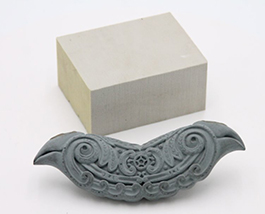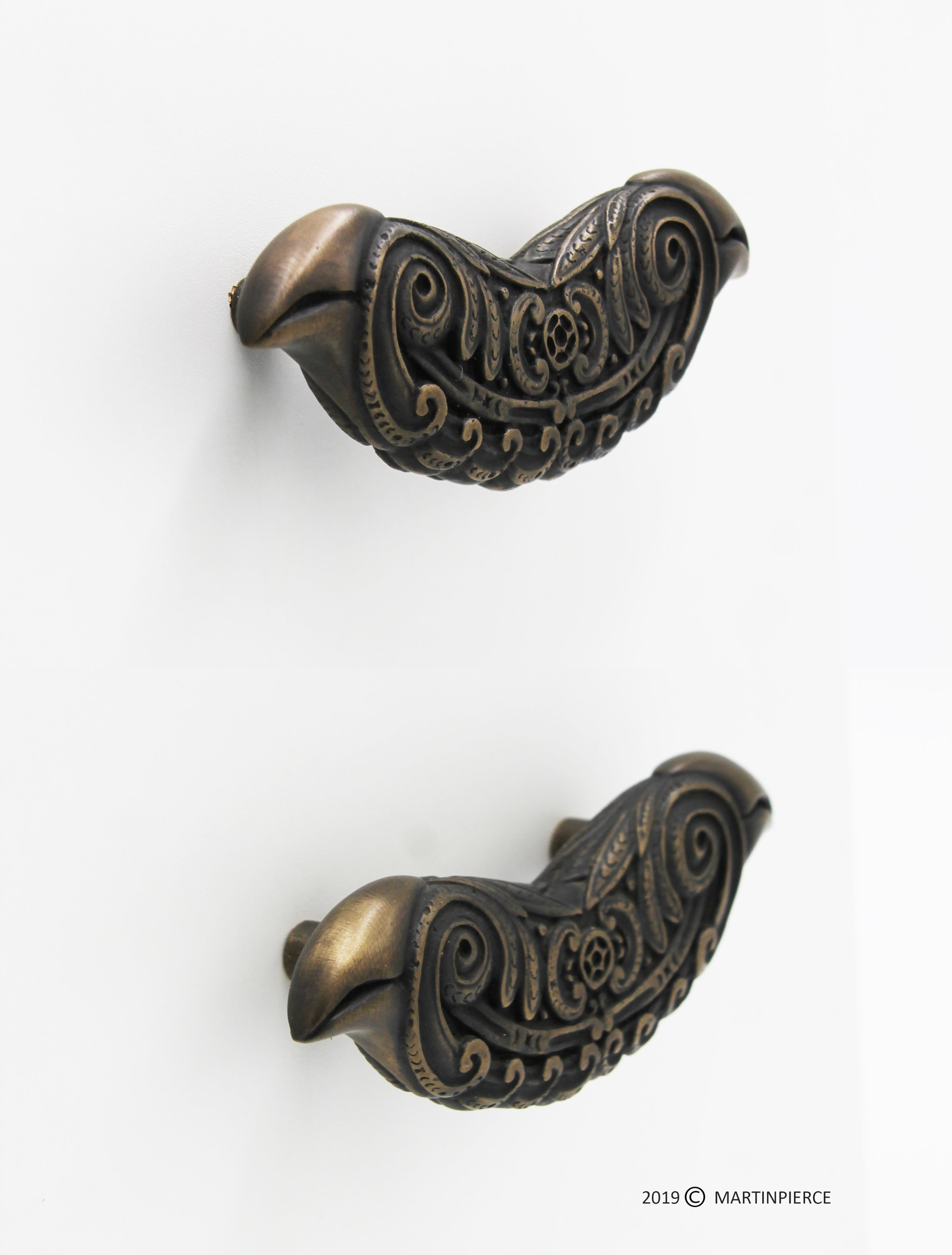There is no correct answer to this question, but your choice will depend on your method of designing and your skill sets. The broad choice is between creating a pattern using traditional carving or modeling techniques versus 3D designing and printing.
Traditional techniques -
You can create a solid pattern by modelling the design in clay and by adding and removing clay to obtain the desired shape. We are sculptors by training and create our patterns using wood or jewelers wax or high-density rigid foam. Basswood carves well as it is a close grained soft wood but the grain is distracting, and its directional nature means you have to be an adept carver changing direction with your chisels as you follow the grain. When the wood pattern has been carved, we typically coat it with a matt grey primer which both fills the grain and helps us see any imperfections that need to be carved out and sanded. While Jewelers blue wax is dense and one can achieve good detail it is not as strong as basswood and is more brittle which makes it less ideal when creating fine deep lines. Moreover, even though free of grain it has a uniform color that has a pronounced sheen both of which make it difficult to see what has been carved.
As both wax and wood have drawbacks, we find ourselves increasingly turning to high density rigid foam a product often used in the film industry by set designers to create props. This medium is light weight, dense, grain-less and matt and carves beautifully. It is available in blocks and easy to cut and glue and moderately priced.
The Hawaiian bird pulls were ordered recently by designer Christina Hilt in Florida in warmer tones to compliment the golden burl wood in her client’s closet. A dark patina accentuates the detail in a piece but if the pattern is carved with a deep relief carving then these details will still be seen even where there is minimal patina and minimal tonal contrast as was the case with Christina’s order.
Pattern in high density foam with foam block
Contemporary 3D pattern making
If you are adept in digital designing, then you would begin by designing your pattern in illustrator or Painter or other 3D program. On completion the design would need to be output as a STL file which could then be printed as an SLA print which is a photo polymer






